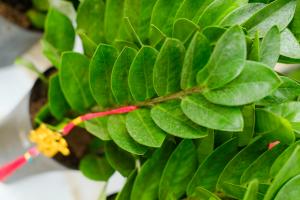What is Water Lily Plant?
Water lily plants, also referred to as aquatic plants or pond plants, are perennial plants that grow in water bodies such as ponds or lakes. With their vibrant colors and captivating shapes, these plants are not just popular among homeowners who want to create a serene and calming atmosphere in their backyard ponds. Still, they are also a favorite aquatic plant among hobbyist water gardeners, landscape artists, and photographers.
Habitat of Water Lily Plant
Water lilies thrive well in freshwater bodies with calm, still, and shallow waters. These aquatic plants grow well in environments where water temperatures range between 60 to 80 degrees Fahrenheit. Generally, water lilies enjoy direct sunlight and grow best in shallow waters between 12 to 48 inches deep.
Some water lily species grow better in relatively acidic waters, while others thrive well in alkaline conditions. As such, it's essential to research the specific species of waterlily plant when considering growing them in a pond or water garden.
Types of Water Lily Plants
There are approximately 70 to 80 known species of water lilies growing worldwide. Water lilies are classified into two distinct categories; hardy and tropical water lilies.
Hardy water lilies: These are the most common water lilies in North America. They grow well from Alaska to Florida and produce spectacular flowers throughout the growing season. Hardy water lilies are perennials and can survive in unfavorable conditions during the dormant winter season.
Tropical water lilies: These water lilies grow in warmer climates such as South America, Asia, and Australia. They produce extremely stunning flowers in bright colors, and their leaves come in a variety of shapes and sizes. Unlike Hardy water lilies, tropical water lilies are not as tolerant of colder weather conditions and need to be taken indoor during chilly weather.
Features of Water Lily Plant
Most water lily plants are characterized by their broad, lily pad-shaped leaves that can float on the water surface, while delicate and attractive flowers bloom on tall stalks that extend out of the water. The plant stems are made of rhizomes, which are somewhat underground stem-like structures that produce roots and shoots, and leaves on the water surface. The plant's flowers consist of colorful petals and sepals that surround a central disc of pistils and stamens.
Uses of Water Lily Plant
Water lilies have both aesthetic and significant ecological value. Their captivating beauty makes them ideal for use in landscape art and water gardens that create a serene and calming atmosphere. Aside from being used for decorative purposes, water lilies provide a wide array of ecological benefits such as natural water purification, enhancing oxygen levels in ponds, and providing food and habitats for several aquatic animals such as frogs, insects, and fish.
Cultivation of Water Lily Plant
Water lilies are relatively easy to cultivate in a backyard pond or water garden setting. The plants require a stable water temperature, direct sunlight, and healthy soil. Generally, they should be planted in baskets filled with special aquatic soil, fertilized every two to three weeks, and pruned regularly to encourage the growth of new shoots and leaves. Some water lily species require more maintenance than others, so it's critical to research the specific plant species before incorporating it into a water garden ecosystem.
Conclusion
Water lilies are incredible aquatic plants that are not only strikingly beautiful but also have several ecological benefits. From their large and thin leaves to their eye-catching flowers, water lilies can add a unique touch to any water garden or pond. Hardy or tropical, these aquatic wonders thrive in calm, still waters, and they make a perfect addition to any landscape design that requires a serene and calming environment.

 how many times do yo...
how many times do yo... how many planted tre...
how many planted tre... how many pine trees ...
how many pine trees ... how many pecan trees...
how many pecan trees... how many plants comp...
how many plants comp... how many plants can ...
how many plants can ... how many plants and ...
how many plants and ... how many pepper plan...
how many pepper plan...


































